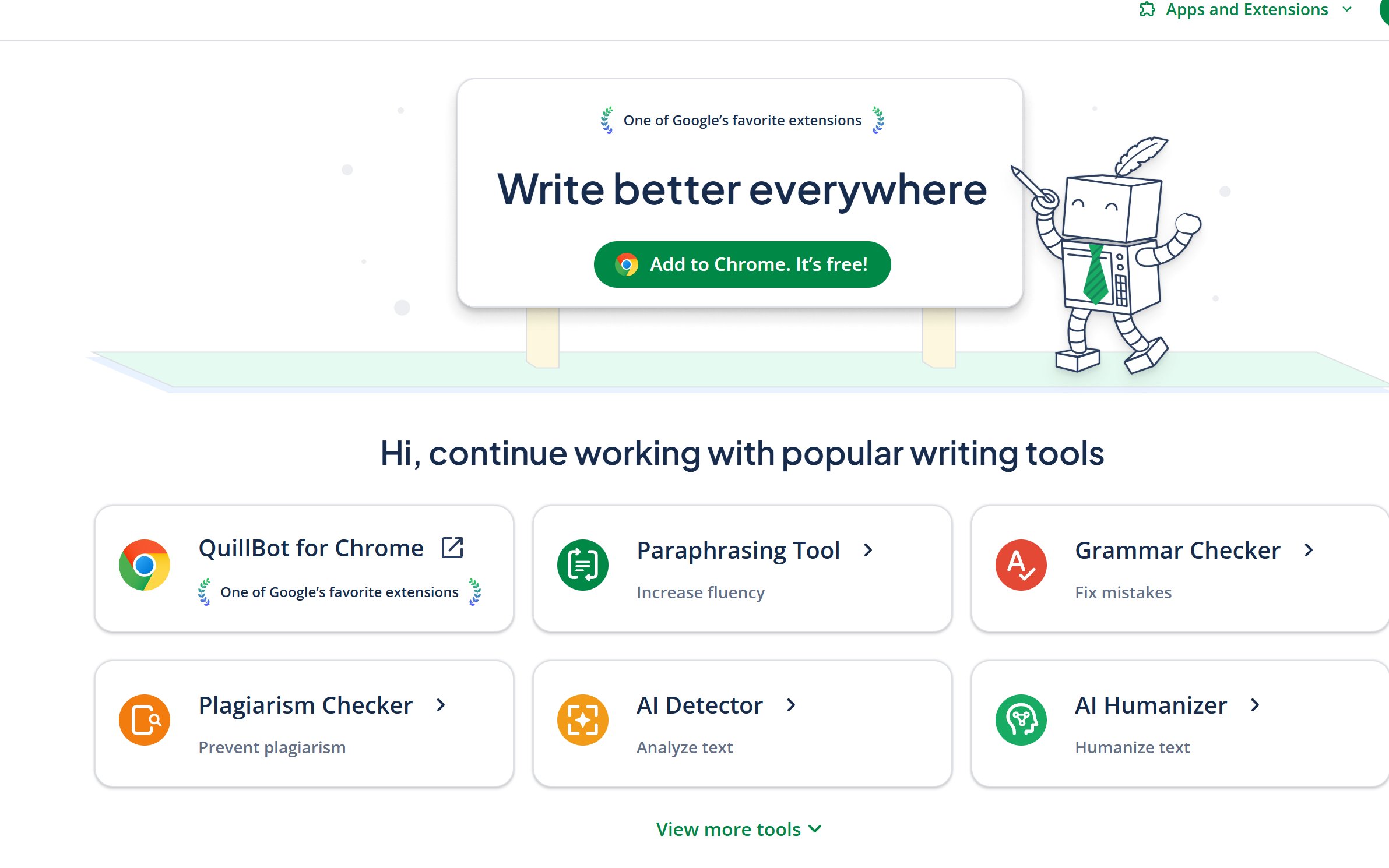When discussing “humanizing” AI-generated text, QuillBot Humanizer is one of the most recognized and widely used tools. As an extension of the QuillBot ecosystem, it was designed to make AI-produced writing sound more natural by adjusting tone, sentence rhythm, and stylistic patterns that typically reveal machine-generated text. According to QuillBot’s official documentation, the Humanizer is trained on hundreds of thousands of real human-written texts, allowing it to replace AI-like phrasing with more authentic human expression.
However, for academic and professional work, many users feel it does not fully resolve logical inconsistencies, repetitive phrasing patterns or AI-detection concerns. Because of this, more students and researchers are searching for alternatives that provide deeper structural refinement and more reliable humanization.
1. Why People Look for Alternatives to QuillBot Humanizer
User feedback reveals several recurring concerns:
-Humanized text can still be detected by major AI-detection systems.
-The academic tone sometimes becomes overly wordy or inconsistent.
-Complex arguments may lose clarity after rewriting, especially in long-form academic work.
These limitations have pushed students, researchers, and professionals to explore tools that offer deeper structural rewriting, more consistent logic preservation, or more effective AI-signal reduction.
To evaluate each tool fairly, I used the same 250-word AI-generated essay and analyzed the output quality based on readability, coherence, academic tone, and AI-detection scores.2. Why People Look for Alternatives to QuillBot Humanizer.
2. Best Alternatives to QuillBot Humanizer
2.1 Ace Essay
Ace Essay specializes in reducing AI signals while preserving academic structure. It analyzes your text before rewriting, identifies AI-like segments and then adjusts them with a focus on both clarity and human-style expression. This makes it well suited for essays, research reports and university writing tasks.

Strengths
• Very high bypass rate against Turnitin, GPTZero and ZeroGPT
• Maintains academic logic and tone
• Provides an official AI report to verify results
Limitations
• English only
2.2Humanize.ai
Humanize.ai emphasizes style and tone flexibility, allowing users to switch between academic, creative, or conversational voices. It’s a favorite among marketers and content creators aiming for a more natural flow.

Strengths:
- Multiple tone options
- Handles long-form rewriting (up to 3,000 words)
- Clean, modern, and intuitive UI
Limitations:
- No AI-detection feedback or preview
- Can sometimes repeat sentence structures
2.3 Undetectable.ai
Undetectable.ai focuses on reducing AI-like patterns and producing more natural-sounding text. It is widely used by bloggers and students who need quick adjustments.

Strengths
• Real-time feedback on naturalness
• Very user friendly
• Effective for conversational and SEO-oriented content.
Limitations
• Technical or scientific content may lose clarity
• Longer essays may show small grammatical inconsistencies
3. Responsible Use and Future Outlook
Responsible Use Matters
Recent educational research shows that more universities are allowing AI-assisted writing when students disclose it. Concerns remain about originality, fairness and citation accuracy, which means AI should support—not replace—student reasoning and authorship.
(Source: SpringerOpen — “Student Use of Generative AI in Higher Education”)
Detection Tools Are Still Imperfect
Although Turnitin expresses high confidence in identifying AI-generated writing, research shows that false positives and biases still occur, especially among non-native English writers. Transparent use of AI tools remains essential.
Global Policies Are Still Developing
Large-scale surveys show that fewer than ten percent of universities worldwide have published formal guidelines for generative AI. This means institutional expectations will continue to evolve.
(Source: UNESCO — Global AI Education Policy Survey)
The Future of Writing is Hybrid
Effective writing now combines the strengths of both AI and human authors. AI may improve clarity and structure, while writers contribute insight, originality and ethical judgment. As educational policy matures, hybrid writing approaches will likely become the standard.
5. Conclusion: Which Tool Should You Use?
If you are considering alternatives to QuillBot Humanizer, here are clear recommendations based on real-world scenarios:Academic essays, research papers, high-stakes submissions
✅ Ace Essay
Best for logic preservation, structural refinement, and strong AI-detector performance.
Marketing content, blogs, social posts, creative writing
✅ Humanize.ai
Best for tone control, stylistic variation, and natural creative flow.
SEO writing, casual writing, quick humanization
✅ Undetectable.ai
Best for speed, simplicity, and natural conversational style.
Light editing or everyday rewriting
✅ QuillBot Humanizer
Still excellent for simple humanized rewrites, multilingual needs, or low-risk tasks.
About the Author

Fiona Zhang is a seasoned content writer and AI enthusiast with extensive experience in the field of writing and technology. Fiona specializes in creating insightful articles on AI tools, content creation, and productivity. To learn more about Fiona and read more of her work, visit her author page.